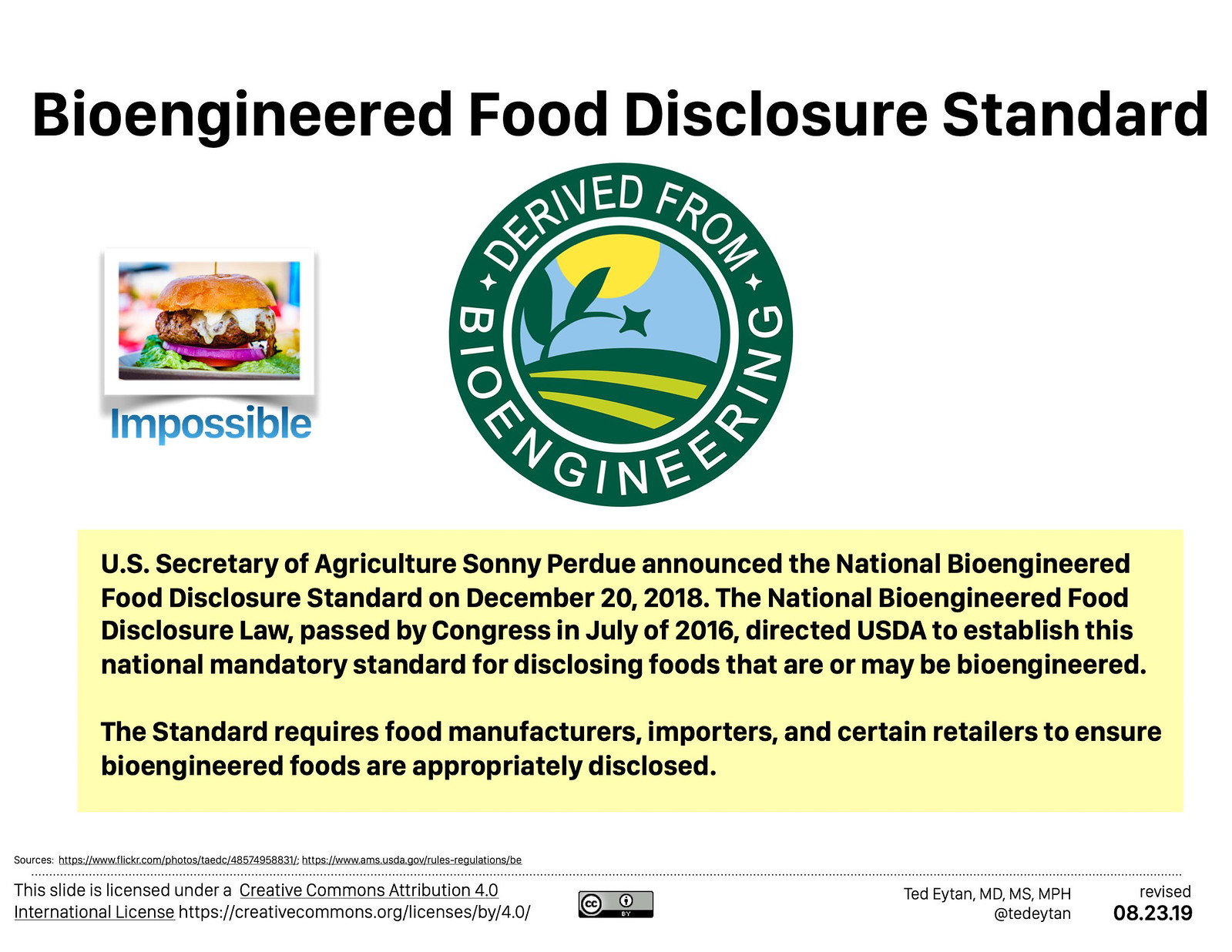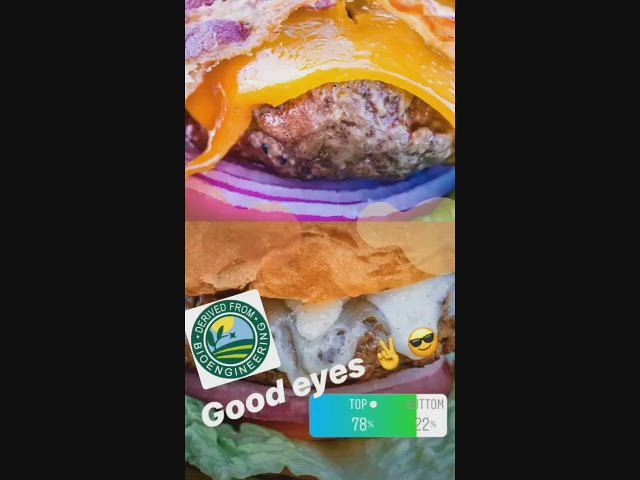
We’re now in the era of diabetes reversal, why don’t more doctors know?
This week’s photos were taken in Washington, DC (of course), with curiosity about what different food products look like in reality. See if you can guess which is real or not. The answer is below, along with more info about ingredients, NOVA classification, and the Bioengineered Food Disclosure Standard.

- Real hamburger ingredients: Beef
- Impossible Burger ingredients: Ingredients: Water, Soy Protein Concentrate, Coconut Oil, Sunflower Oil, Natural Flavors, 2% or less of: Potato Protein, Methylcellulose, Yeast Extract, Cultured Dextrose, Food Starch Modified, Soy Leghemoglobin, Salt, Soy Protein Isolate, Mixed Tocopherols (Vitamin E), Zinc Gluconate, Thiamine Hydrochloride (Vitamin B1), Sodium Ascorbate (Vitamin C), Niacin, Pyridoxine Hydrochloride (Vitamin B6), Riboflavin (Vitamin B2), Vitamin B12.
The real hamburger is NOVA Group 1, the artifical one is NOVA Group 4

Here are the definitions of both:
- NOVA Food Classification Group 1: Unprocessed or minimally processed foods: “Minimally processed foods are natural foods altered by processes such as removal of inedible or unwanted parts, drying, crushing, grinding, fractioning, filtering, roasting, boiling, pasteurisation, refrigeration, freezing, placing in containers, vacuum packaging, or non-alcoholic fermentation. None of these processes adds substances such as salt, sugar, oils or fats to the original food.”
-
NOVA Food Classification Group 4: Ultra-Processed Foods“industrial formulations made entirely or mostly from substances extracted from foods (oils, fats, sugar, starch, and proteins), derived from food constituents (hydrogenated fats and modified starch), or synthesized in laboratories from food substrates or other organic sources (flavor enhancers, colors, and several food additives used to make the product hyper-palatable). Manufacturing techniques include extrusion, moulding, and preprocessing by means of frying.”
(The bacon and cheese would be Group 3: Processed foods)
The Bioengineered Food Disclosure Standard from the USDA

U.S. Secretary of Agriculture Sonny Perdue announced the National Bioengineered Food Disclosure Standard on December 20, 2018. The National Bioengineered Food Disclosure Law, passed by Congress in July of 2016, directed USDA to establish this national mandatory standard for disclosing foods that are or may be bioengineered.
The Standard requires food manufacturers, importers, and certain retailers to ensure bioengineered foods are appropriately disclosed.
https://www.ams.usda.gov/rules-regulations/be
The soy product in the impossible burger is a genetically modified organism (GMO).
I put this question to a vote on another social network, and most people could tell the difference. Still, they both make for great food photos. Enjoy.
References
- Monteiro CA, Cannon G, Levy RB et al. NOVA. The star shines bright.[Food classification. Public health] World Nutrition January-March 2016, 7, 1-3, 28-38 l
- See: BE Disclosure | Agricultural Marketing Service
